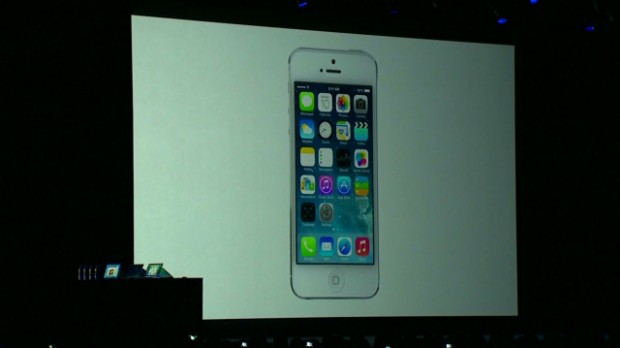
The
new update to the iPhone and iPad operating system
is much more than just a fresh veneer. Beyond its flattened user
interface that no longer tries to mimic real-life textures, you'll find
that iOS has been rethought as much as its been redesigned.
Every core app that
Apple (AAPL, Fortune 500)
includes with iOS has been given a facelift. In many cases, those apps
have been newly conceived. For example, the Photos app now models itself
after
Facebook's (FB) Instagram, and the music app baked in some crucial,
Pandora-esque (P) streaming functionality.
It's true that many of the revamped, improved and new features found in iOS 7 are examples of Apple playing catch up with
Google's (GOOG, Fortune 500) Android and
Microsoft's (MSFT, Fortune 500) Windows Phone.
New features like Control Center, which lets you quickly tweak
settings, appears ripped straight from Google. A new card metaphor for
app switching first appeared on the ill-fated Palm Pre in 2009. In iOS
7, every app will have the ability to run in the background and update
itself without user interaction, just like Android. And the daily agenda
view in Notification Center very much feels like a response to Google
Now.
Still, these much-needed, overdue changes address some substantial
problems that had been plaguing iOS for years. Just because Apple didn't
think up these ideas doesn't mean that iOS isn't better for employing
them, and adopting the better parts of its competition only helps to
accentuate Apple's undeniable strengths, such as its app ecosystem.
And even if they're less pronounced, Apple still showed off some new innovations in iOS 7.
Apple didn't just go "flat" with its new user interface -- it went one
step further than what Android and Windows Phone have been doing. Apple
skillfully used layers and translucency to re-introduce a sense of depth
to iOS. Some people in the tech community, including Gizmodo's Kelsey
Campbell-Dollaghan, have argued "depth"
is the next step after the flat UI craze.
A feature like the parallax wallpaper, which orients itself
differently depending on how you hold the phone, adds enough of a "gee
whiz" factor without getting in the way. It may seem totally
superfluous, but those kind of design innovations give some humanity to
iOS.
With iOS 7, Apple has positioned itself a half-step ahead
of the pack in the design arena. That's a major achievement given how
archaic iOS was starting to look.
Consider the fact that, under
the leadership of design chief Jony Ive, Apple overhauled the entirety
of iOS in less than a year. That process began immediately after CEO Tim
Cook kicked Scott Forstall, iOS' former leather-loving boss, to the
curb and restructured Apple's leadership.
If iOS 7's
performance meets the expectations that its new design has set, it
serves as a promising sign that Apple's executive team is capable of
keeping the company humming along. Apple may not be light-years ahead of
the competition like it once was, but at the very least, iOS again
resembles a modern mobile operating system.
Now, Apple can once again focus more on innovating and less about preventing itself from from falling on its face.

 The
The  Taksim Square, the focus of days of protest, is now largely cleared.
Taksim Square, the focus of days of protest, is now largely cleared.
